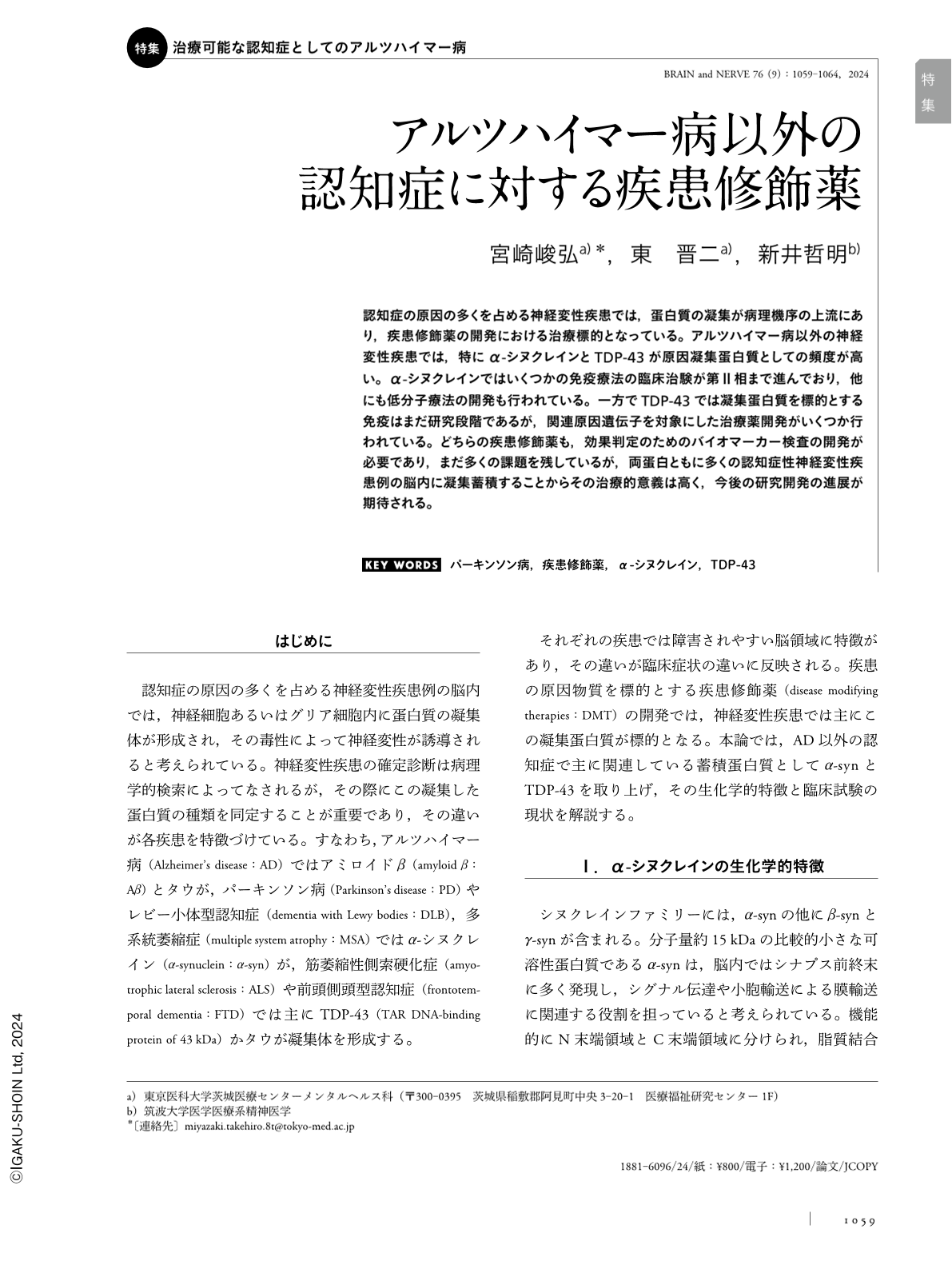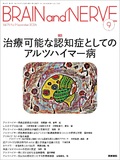Japanese
English
- 有料閲覧
- Abstract 文献概要
- 1ページ目 Look Inside
- 参考文献 Reference
認知症の原因の多くを占める神経変性疾患では,蛋白質の凝集が病理機序の上流にあり,疾患修飾薬の開発における治療標的となっている。アルツハイマー病以外の神経変性疾患では,特にα-シヌクレインとTDP-43が原因凝集蛋白質としての頻度が高い。α-シヌクレインではいくつかの免疫療法の臨床治験が第Ⅱ相まで進んでおり,他にも低分子療法の開発も行われている。一方でTDP-43では凝集蛋白質を標的とする免疫はまだ研究段階であるが,関連原因遺伝子を対象にした治療薬開発がいくつか行われている。どちらの疾患修飾薬も,効果判定のためのバイオマーカー検査の開発が必要であり,まだ多くの課題を残しているが,両蛋白ともに多くの認知症性神経変性疾患例の脳内に凝集蓄積することからその治療的意義は高く,今後の研究開発の進展が期待される。
Abstract
Neurodegenerative diseases represent the most common cause of dementia. Protein aggregation is upstream in the pathological mechanisms and is a therapeutic target in the development of disease-modifying drugs in this patient population. Notably, α-synuclein or DNA-binding protein of 43kDa (TDP-43) is commonly involved in the pathomechanisms that contribute to non-Alzheimer neurodegenerative diseases. Several immunotherapy clinical trials on α-synuclein have progressed to phase 2, and small-molecule therapeutics are ongoing. With regard to TDP-43, immunotherapies that target protein aggregates are currently being developed, and research is underway to investigate several drugs that target the associated causative gene. Further research is warranted for deeper insight into both disease-modifying drugs; biomarker tests need to be developed to determine their efficacy. However, both proteins aggregate and accumulate in the brain in many neurodegenerative diseases and dementia; therefore, they are therapeutically significant, and future progress is expected in research and development.

Copyright © 2024, Igaku-Shoin Ltd. All rights reserved.


